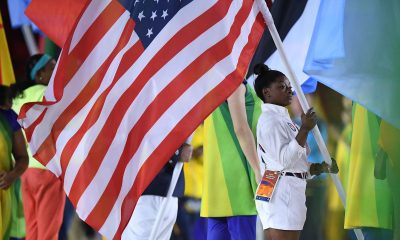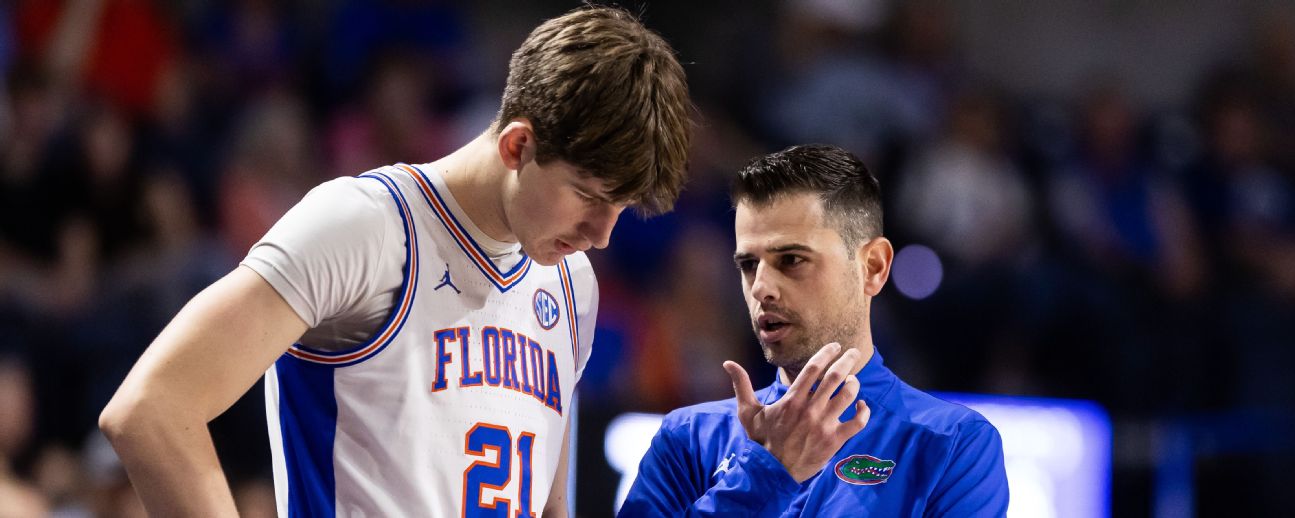
With the transfer portal and the increasing number of international prospects going to college, the real college basketball offseason is shorter than ever. Even as you read this, rosters are still being tweaked and fine-tuned.
But the final major deadline of the offseason calendar came and went on May 28, the deadline for players to withdraw their names from the NBA draft and return to college. Now, the 2025-26 college basketball landscape is finally coming into focus.
The debate over preseason No. 1 intensified with Milos Uzan returning to Houston and Florida adding Boogie Fland while also getting back Alex Condon. Both programs are squarely in the conversation alongside Purdue, with UConn and St. John’s not far behind.
As things stand, we have the fewest questions about the Boilermakers, who likely have the highest floor given the return of Wooden Award favorite Braden Smith and All-American Trey Kaufman-Renn. So, for now, Matt Painter’s team retains its place atop the rankings.
As the offseason progresses and we have more time to dive into rosters and rotations, there will be constant shuffling. But let’s take a look at our latest projections for the top 25 teams for next season.


Previous ranking: 1
There’s a chance Purdue has the preseason Wooden Award favorite and two All-Americans on its roster next season.
Braden Smith will start the season as the best guard in the country after taking the next step in his development this past campaign, while Trey Kaufman-Renn is a dominant paint force.
The addition of South Dakota State transfer Oscar Cluff should help inside, while a healthy Daniel Jacobsen could be poised for a breakout season. Landing Israeli guard Omer Mayer and North Florida transfer Liam Murphy adds needed depth.
Projected starting lineup
Braden Smith (15.8 PPG)
C.J. Cox (6.0 PPG)
Fletcher Loyer (13.8 PPG)
Trey Kaufman-Renn (20.1 PPG)
Oscar Cluff (17.6 PPG at South Dakota State)
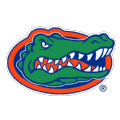
Previous ranking: 18
No team in the country saw a bigger rise in the rankings as a result of NBA draft withdrawals than the reigning national champions.
First, former Arkansas guard Boogie Fland committed to the Gators after his decision to withdraw shortly after the combine. Then, the week of the deadline, Alex Condon also pulled his name out of the draft to return to Gainesville. Those two should join Princeton transfer Xaivian Lee as well as returnees Rueben Chinyelu and Thomas Haugh — an obvious breakout candidate — in one of the most talented starting fives in the country.
There could be growing pains as Todd Golden figures out how all his players fit, but the Gators are certainly in the discussion to go back-to-back — an impressive achievement after the departures of Walter Clayton Jr., Will Richard, Alijah Martin and Denzel Aberdeen.
Projected starting lineup
Boogie Fland (13.5 PPG at Arkansas)
Xaivian Lee (16.9 PPG at Princeton)
Thomas Haugh (9.8 PPG)
Alex Condon (10.6 PPG)
Rueben Chinyelu (6.1 PPG)
![]() Alex Condon’s decision to return to Florida boosts the outlook for Todd Golden’s team in 2025-26. Matt Pendleton-USA TODAY Sports
Alex Condon’s decision to return to Florida boosts the outlook for Todd Golden’s team in 2025-26. Matt Pendleton-USA TODAY Sports Previous ranking: 4
Previous ranking: 4 It was an eventful NBA draft withdrawal deadline for Houston with all eyes on Milos Uzan’s decision. Hours before Uzan announced his return — which puts the Cougars in the conversation for preseason No. 1 — Creighton transfer Pop Isaacs rescinded his commitment to sign with Texas A&M. That loss coupled with LJ Cryer’s graduation means Houston could lack some scoring pop on the perimeter, though Kelvin Sampson is bringing in three top-25 prospects to help fill the gaps.
It was an eventful NBA draft withdrawal deadline for Houston with all eyes on Milos Uzan’s decision. Hours before Uzan announced his return — which puts the Cougars in the conversation for preseason No. 1 — Creighton transfer Pop Isaacs rescinded his commitment to sign with Texas A&M. That loss coupled with LJ Cryer’s graduation means Houston could lack some scoring pop on the perimeter, though Kelvin Sampson is bringing in three top-25 prospects to help fill the gaps.
Combined with what should be a typically elite Houston defense and the returns of Emanuel Sharp and Joseph Tugler, Sampson’s program isn’t leaving the national conversation anytime soon.
Projected starting lineup
Milos Uzan (11.4 PPG)
Emanuel Sharp (12.7 PPG)
Isiah Harwell (No. 14 in ESPN 100)
Joseph Tugler (5.5 PPG)
Chris Cenac Jr. (No. 6 in ESPN 100)

Previous ranking: 2
UConn’s national championship streak ended at two, but Dan Hurley and the Huskies have reloaded to make another run.
Alex Karaban‘s decision to forego the NBA draft and return to Storrs vaulted them up the rankings — we expect him to again team up with potential preseason All-America Solo Ball to form a high-level offensive duo. Silas Demary Jr. is a similar player to former Huskies guard Tristen Newton, while Braylon Mullins should be one of the more impactful newcomers in the country
If Tarris Reed Jr. can stay on the floor consistently, UConn is as loaded as any team in America.
Projected starting lineup
Silas Demary Jr. (13.5 PPG at Georgia)
Solo Ball (14.4 PPG)
Braylon Mullins (No. 14 in ESPN 100)
Alex Karaban (14.3 PPG)
Tarris Reed Jr. (9.6 PPG)

Previous ranking: 3
The Red Storm’s NCAA tournament run ended earlier than expected, but Rick Pitino guided them to the Big East regular-season and tournament titles and has them back in the national discussion.
The losses of Kadary Richmond, RJ Luis Jr. and Aaron Scott will sting, but Zuby Ejiofor is back. And Pitino has one of the best portal classes in the country, led by five top-100 additions: Ian Jackson (North Carolina), Bryce Hopkins (Providence), Joson Sanon (Arizona State), Oziyah Sellers (Stanford) and Dillon Mitchell (Cincinnati).
Idaho State transfer Dylan Darling solves both point guard and depth issues.
Projected starting lineup
Ian Jackson (11.9 PPG at North Carolina)
Joson Sanon (11.9 PPG at Arizona State)
Oziyah Sellers (13.7 PPG at Stanford)
Bryce Hopkins (15.5 PPG at Providence in 2023-24)
Zuby Ejiofor (14.7 PPG)
Editor’s Picks2 Related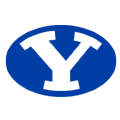 Previous ranking: 7
Previous ranking: 7 All eyes will be on Provo, Utah, next season, as No. 1 recruit A.J. Dybantsa arrives in college to suit up for the Cougars. How has Kevin Young built around Dybantsa? Teaming him up with high-level scorer Richie Saunders on the wing was a great start, and landing Robert Wright III at point guard was a boost. That trio should be one of the country’s most explosive on the offensive end.
All eyes will be on Provo, Utah, next season, as No. 1 recruit A.J. Dybantsa arrives in college to suit up for the Cougars. How has Kevin Young built around Dybantsa? Teaming him up with high-level scorer Richie Saunders on the wing was a great start, and landing Robert Wright III at point guard was a boost. That trio should be one of the country’s most explosive on the offensive end.
In addition, two more high-level shooters with size — Kennard Davis (Southern Illinois) and Tyler Mrus (Idaho) — are entering the program via the portal.
BYU’s remaining focus will be improving defensively.
Projected starting lineup
Robert Wright III (11.5 PPG at Baylor)
Kennard Davis (16.3 PPG at Southern Illinois)
Richie Saunders (16.5 PPG)
A.J. Dybantsa (No. 1 in ESPN 100)
Keba Keita (7.4 PPG)
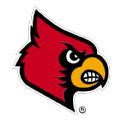
Previous ranking: 7
Pat Kelsey had as strong an offseason as any coach in the country so far, landing impact transfers Ryan Conwell (Xavier), Isaac McKneely (Virginia) and Adrian Wooley (Kennesaw State) to go with top-10 recruit Mikel Brown Jr. in the backcourt.
Kasean Pryor and J’Vonne Hadley were question marks entering the offseason, but both have since announced their returns. And despite the late portal departure of James Scott, there’s still depth up front behind Pryor and Hadley, with particular excitement surrounding the arrivals of Germany native Sananda Fru and Greek big man Vangelis Zougris.
Kelsey’s first NCAA tournament win isn’t far away.
Projected starting lineup
Mikel Brown Jr. (No. 8 in ESPN 100)
Isaac McKneely (14.4 PPG at Virginia)
Ryan Conwell (16.5 PPG at Xavier)
J’Vonne Hadley (12.2 PPG)
Kasean Pryor (12.0 PPG in seven games)
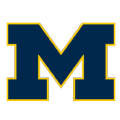
Previous ranking: 9
Michigan solidified its preseason standing at the withdrawal deadline, when potential first-round pick Yaxel Lendeborg pulled his name out of the draft and headed to Ann Arbor. The UAB transfer has been one of the most productive frontcourt players in the country the past two years.
Dusty May hit the portal early in the cycle, landing three potential starters for the next season in Lendeborg, Elliot Cadeau (North Carolina) and Morez Johnson Jr. (Illinois). Cadeau is an incredibly gifted passer while Johnson is primed for a big jump down low.
The Wolverines also added 7-foot-3 UCLA transfer Aday Mara. Returnees Roddy Gayle Jr. and Nimari Burnett and five-star signee Trey McKenney will play on the wings.
Projected starting lineup
Elliot Cadeau (9.4 PPG at North Carolina)
Roddy Gayle Jr. (9.8 PPG)
Nimari Burnett (9.4 PPG)
Yaxel Lendeborg (17.7 PPG at UAB)
Morez Johnson Jr. (7.0 PPG at Illinois)
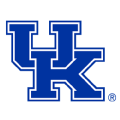
Previous ranking: 11
Kentucky is absolutely loaded on the perimeter next season, with the arrivals of transfers Jaland Lowe (Pitt), Kam Williams (Tulane) and Denzel Aberdeen (Florida) and five-star prospect Jasper Johnson, to go along with the return of leading scorer Otega Oweh and reserve Collin Chandler.
Mark Pope also revamped the frontcourt with defense in mind, with the additions of Mouhamed Dioubate (Alabama) and Jayden Quaintance (Arizona State). Quaintance could miss time after suffering a torn ACL in late February, so a step forward from Brandon Garrison will be needed.
Projected starting lineup
Jaland Lowe (16.8 PPG at Pitt)
Denzel Aberdeen (7.7 PPG at Florida)
Otega Oweh (16.2 PPG)
Mouhamed Dioubate (7.2 PPG at Alabama)
Jayden Quaintance (9.4 PPG at Arizona State)
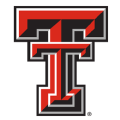
Previous ranking: 8
Grant McCasland’s team had the biggest rise from the first iteration of our rankings on championship Monday to the mid-April update. The biggest move was the return of JT Toppin, a preseason All-American who dominated the second half of the season. And LeJuan Watts, a versatile and skilled wing forward, would be a seamless replacement for Darrion Williams should Williams opt to remain in the portal or declare for the NBA draft. Christian Anderson should also take a step forward in his sophomore season.
Don’t overlook the addition of VCU transfer Luke Bamgboye, who will provide an anchor defensively.
Projected starting lineup
Christian Anderson (10.6 PPG)
Donovan Atwell (13.3 PPG at UNC Greensboro)
Tyeree Bryan (10.4 PPG at Santa Clara)
LeJuan Watts (13.7 PPG at Washington State)
JT Toppin (18.2 PPG)
2025 NBA draft![]() • We offer potential trades for Mavs, Flagg
• We offer potential trades for Mavs, Flagg
• Updated top 100 big board rankings
• Mock draft! 76ers’ pick at No. 3?
• Flagg’s top NBA comps: Kawhi, others
• Stacking all 30 teams’ draft assets | More
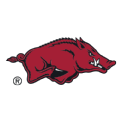
Previous ranking: 10
Arkansas surged down the stretch of the season, earning an NCAA tournament bid then making a run to the Sweet 16 before losing to Texas Tech in overtime. Can John Calipari carry that momentum over to next season?
Four of the Razorbacks’ top six minute-getters from the postseason run will be back next season with Karter Knox withdrawing from the draft at the deadline. Top-10 recruits Darius Acuff and Meleek Thomas add scoring pop to the backcourt, while Calipari also added proven depth down low in Nick Pringle (South Carolina) and Malique Ewin (Florida State).
Projected starting lineup
Darius Acuff (No. 5 in ESPN 100)
D.J. Wagner (11.2 PPG)
Karter Knox (8.3 PPG)
Trevon Brazile (6.8 PPG)
Malique Ewin (14.2 PPG at Florida State)

Previous ranking: 6
Duke jumped from No. 11 to No. 6 in May after Isaiah Evans opted to forgo the NBA draft and transfer portal to return to Durham, followed by Washington State transfer Cedric Coward‘s commitment. But when it became apparent that Coward — a borderline first-round pick — would remain in the draft, Jon Scheyer had to pivot. He quickly landed potential future first-rounder Dame Sarr, an Italian wing who played for FC Barcelona, and top-25 recruit Sebastian Wilkins, who reclassified up from 2026.
Scheyer once again brings in the nation’s top-ranked recruiting class, headlined by Cameron Boozer, who should be among the most productive frontcourt players in the country.
Projected starting lineup
Caleb Foster (5.1 PPG)
Isaiah Evans (6.8 PPG)
Nikolas Khamenia (No. 15 in ESPN 100)
Cameron Boozer (No. 3 in ESPN 100)
Patrick Ngongba II (3.9 PPG)
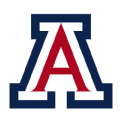
Previous ranking: 12
Tommy Lloyd is a lock to start two freshmen next season, with top-15 prospects Koa Peat and Brayden Burries entering the fold. Peat is a consistent producer and winner, while Burries is an aggressive multidimensional scorer.
Jaden Bradley is back at the point guard spot, and the Wildcats also return big men Tobe Awaka and Motiejus Krivas. It’s difficult to see Awaka and Krivas lining up alongside each other often, though, so Lloyd will likely turn to Anthony Dell’Orso (28 starts last season).
The strength of this roster took a hit when Carter Bryant decided to stay in the draft, so it wouldn’t be a surprise if the Wildcats add one more player on the wing.
Projected starting lineup
Jaden Bradley (12.1 PPG)
Brayden Burries (No. 11 in ESPN 100)
Anthony Dell’Orso (7.2 PPG)
Koa Peat (No. 9 in ESPN 100)
Tobe Awaka (8.0 PPG)

Previous ranking: 15
After reaching the Final Four this past season, Bruce Pearl’s roster faces an overhaul.
Tahaad Pettiford‘s decision to withdraw from the draft and return to the Tigers was a significant development — he’s one of the most electric players in the country and has a chance to open 2025-26 as a preseason All-American. The sudden loss of Chad Baker-Mazara to the portal in late April was a surprise, but Pearl turned around and landed Texas Tech transfer Kevin Overton and Division II import Elyjah Freeman.
Auburn already had high-major transfers Keyshawn Hall (UCF) and KeShawn Murphy (Mississippi State) in the fold, and also landed a potential impact frontcourt player in Serbian big man Filip Jovic.
Projected starting lineup
Tahaad Pettiford (11.7 PPG)
Kevin Overton (7.8 PPG at Texas Tech)
Elyjah Freeman (19.3 PPG at D-II Lincoln Memorial)
Keyshawn Hall (18.8 PPG at UCF)
KeShawn Murphy (11.7 PPG at Mississippi State)
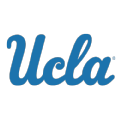
Previous ranking: 14
UCLA made a massive early splash in the portal, landing Mountain West Player of the Year Donovan Dent from New Mexico. He gives the Bruins a dynamic, aggressive playmaker. Three starters from this season’s team should also be back, while Mick Cronin will hope for a step forward from Trent Perry in Year 2.
Eric Dailey and Tyler Bilodeau form one of the better frontcourt duos in the Big Ten, with both players posing matchup problems for opponents. Kansas City transfer Jamar Browns adds an experienced shot-maker and Michigan State transfer Xavier Booker is a former five-star prospect who has shown flashes.
Projected starting lineup
Donovan Dent (20.4 PPG at New Mexico)
Skyy Clark (8.5 PPG)
Trent Perry (3.7 PPG)
Eric Dailey (11.4 PPG)
Tyler Bilodeau (13.5 PPG)

Previous ranking: 17
Brad Underwood’s roster will have a heavy international feel to it next season, with plenty of talent to compete for a second-weekend trip in the NCAA tournament. Kylan Boswell and Tomislav Ivisic were key pieces in this past season’s team, while Ben Humrichous started 26 games and Ty Rodgers started all 38 games in 2023-24 before redshirting last season.
Underwood hit the portal and overseas market to reinforce the rest of the roster, landing transfers Andrej Stojakovic (California) and Zvonimir Ivisic (Arkansas) as well as international pros Mihailo Petrovic and David Mirkovic.
Projected starting lineup
Mihailo Petrovic (14.3 PPG for Mega Superbet)
Kylan Boswell (12.3 PPG)
Andrej Stojakovic (17.9 PPG at California)
Zvonimir Ivisic (8.5 PPG at Arkansas)
Tomislav Ivisic (13.0 PPG)

Previous ranking: 24
Alabama was one of the big winners of the withdrawal deadline, with Labaron Philon making a late decision to remove his name from the draft and return to Tuscaloosa. The talented guard told reporters at the combine that he had closed the door on going back to college. But Nate Oats was on the hunt for a playmaker on the perimeter and now has Philon back in the fold.
Philon is part of a talented perimeter group that includes returnees Aden Holloway and a healthy Latrell Wrightsell Jr., while former five-star recruit Jalil Bethea will look to bounce back after transferring from Miami.
The frontcourt will likely have to rely on portal additions, namely Bucknell transfer Noah Williamson, who was named 2024-25 Patriot League Player of the Year, and Florida State transfer Taylor Bol Bowen, a skilled forward and former highly touted recruit. Aiden Sherrell needs to take a step forward, too.
Projected starting lineup
Labaron Philon (10.6 PPG)
Aden Holloway (11.4 PPG)
Jalil Bethea (7.1 PPG at Miami)
Taylor Bol Bowen (8.0 PPG at Florida State)
Noah Williamson (17.6 PPG at Bucknell)
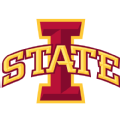
Previous ranking: 13
Iowa State’s offensive improvement could take a hit with the losses of Keshon Gilbert and Curtis Jones, but the Cyclones were ranked in the top 15 nationally in adjusted defensive efficiency in each of TJ Otzelberger’s four seasons in Ames, so there is a relatively high floor given the returning starters.
Tamin Lipsey, Milan Momcilovic and Joshua Jefferson form a great core, while Nate Heise started in place of Gilbert late in the season. Virginia transfer Blake Buchanan should help down low while fellow portal additions Mason Williams (Eastern Washington) and Dominick Nelson (Utah Valley) add depth.
Projected starting lineup
Tamin Lipsey (10.6 PPG)
Nate Heise (5.1 PPG)
Milan Momcilovic (11.5 PPG)
Joshua Jefferson (13.0 PPG)
Blake Buchanan (5.7 PPG at Virginia)

Previous ranking: 22
It will be a new look for Gonzaga, with starters Ryan Nembhard, Nolan Hickman, Khalif Battle and Ben Gregg all out of eligibility. But Graham Ike returns as the team’s anchor down low, and Braden Huff is back to play alongside Ike in the frontcourt. And the Zags get a bump in the rankings after landing Grand Canyon transfer Tyon Grant-Foster, one of the most talented scorers in the country — he averaged just 14.8 points last season but put up 20.1 points in 2023-24.
The perimeter still has some questions. Braeden Smith and Jalen Warley both sat out this past season after transferring, while Steele Venters hasn’t played since 2023 because of injury. Mark Few did add Arizona State transfer Adam Miller, who will be playing at his fourth school after having his most efficient offensive season in 2024-25.
Projected starting lineup
Braeden Smith (12.5 PPG at Colgate in 2023-24)
Adam Miller (9.8 PPG at Arizona State)
Tyon Grant-Foster (14.8 PPG at Grand Canyon)
Braden Huff (11.0 PPG)
Graham Ike (17.3 PPG)
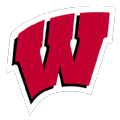
Previous ranking: 16
Wisconsin found success this past season playing at a much faster tempo than previous teams under Greg Gard. The Badgers were also more reliant on the 3-point shot. Is that their new formula moving forward?
Gard hit the transfer portal in a big way, landing three potential starters in Nick Boyd (San Diego State), Andrew Rohde (Virginia) and Austin Rapp (Portland) early in the cycle. All-Big Ten guard John Blackwell is also back to lead the way, while Nolan Winter enjoyed a breakout campaign in 2024-25.
Projected starting lineup
Nick Boyd (13.4 PPG at San Diego State)
Andrew Rohde (9.3 PPG at Virginia)
John Blackwell (15.8 PPG)
Austin Rapp (13.8 PPG at Portland)
Nolan Winter (9.4 PPG)
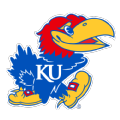
Previous ranking: 21
Bill Self received a huge boost for next season during Final Four weekend, when Flory Bidunga withdrew from the transfer portal and announced he was returning to the Jayhawks. He should form one of the best inside-outside duos in the country alongside Darryn Peterson, the projected No. 1 pick in the 2026 draft.
But Kansas still needs much more. The Jayhawks have landed a trio of potential wing starters in Tre White (Illinois), Melvin Council Jr. (St. Bonaventure) and Jayden Dawson (Loyola Chicago). But they missed on Darrion Williams and Dame Sarr, and there aren’t many impact players still on the market.
Projected starting lineup
Darryn Peterson (No. 2 in ESPN 100)
Melvin Council Jr. (14.6 PPG at St. Bonaventure)
Jayden Dawson (13.9 PPG at Loyola Chicago)
Tre White (10.5 PPG at Illinois)
Flory Bidunga (5.9 PPG)

Previous ranking: 19
Greg McDermott loses two of the program’s stalwarts from the past few years in Ryan Kalkbrenner and Steven Ashworth, as well as starter Jamiya Neal. But Creighton has an aesthetically pleasing offensive system and plenty of minutes to sell, and it worked in the portal this offseason, landing Owen Freeman (Iowa), Josh Dix (Iowa), Blake Harper (Howard), Nik Graves (Charlotte) and Austin Swartz (Miami).
We’re also expecting a step forward from Jackson McAndrew, a 6-foot-10 sniper who showed considerable promise as a freshman for the Bluejays.
Projected starting lineup
Blake Harper (19.5 PPG at Howard)
Josh Dix (14.4 PPG at Iowa)
Jackson McAndrew (7.8 PPG)
Jasen Green (4.9 PPG)
Owen Freeman (16.7 PPG at Iowa)

Previous ranking: 20
Tennessee has been busy reloading the roster, with top-five recruit Nate Ament and Maryland transfer Ja’Kobi Gillespie representing two of the most impactful newcomers for any team in the country. Ament has incredible long-term upside, while Gillespie was among the best point guards in college basketball this past season. Louisiana Tech transfer Amaree Abram also adds shooting.
Rick Barnes has strong frontcourt depth, with Jaylen Carey (Vanderbilt) joining starter Felix Okpara and reserves Cade Phillips and J.P. Estrella. The Vols need more, though, with starters Zakai Zeigler, Chaz Lanier, Jahmai Mashack and Igor Milicic Jr. and reserves Jordan Gainey and Darlinstone Dubar all gone.
Projected starting lineup
Ja’Kobi Gillespie (14.7 PPG at Maryland)
Amaree Abram (12.3 PPG at Louisiana Tech)
Nate Ament (No. 4 in ESPN 100)
Jaylen Carey (8.0 PPG)
Felix Okpara (7.1 PPG)

Previous ranking: Unranked
Expectations for Will Wade’s first season in Raleigh grew dramatically in late May, when the Wolfpack beat out Kansas for Texas Tech transfer Darrion Williams, one of the best players in the portal this spring. Now NC State has a legitimate offensive fulcrum and an All-American-caliber player.
While Wade brought along a couple of players with him from McNeese, he also focused on power-conference experience with portal additions Tre Holloman (Michigan State), Terrance Arceneaux (Houston), Jerry Deng (Florida State) and Ven-Allen Lubin (North Carolina) all having played high-major basketball.
Lubin should battle with international addition Paul Mbiya for a starting spot down low.
Projected starting lineup
Tre Holloman (9.1 PPG at Michigan State)
Terrance Arceneaux (6.5 PPG at Houston)
Quadir Copeland (9.2 PPG at McNeese)
Darrion Williams (15.1 PPG at Texas Tech)
Ven-Allen Lubin (8.7 PPG at North Carolina)

Previous ranking: 25
Hubert Davis has been busy in the portal, replacing the departing Elliot Cadeau and Ian Jackson with transfers Kyan Evans (Colorado State) and Jonathan Powell (West Virginia). Davis also landed one of the best bigs in the portal with Arizona’s Henri Veesaar, as well as upside players in Alabama’s Jarin Stevenson and Virginia Tech’s Jaydon Young.
With Seth Trimble‘s return and top-10 recruit Caleb Wilson‘s arrival, there’s a talented core in Chapel Hill. But Carolina had also been swinging (and missing) on impact wings, especially after Drake Powell opted to remain in the NBA draft despite not appearing to be a lock first-round pick. That drought ended when Montenegrin wing Luka Bogavac picked North Carolina. The 22-year-old should make an immediate impact as a shooter.
Projected starting lineup
Kyan Evans (10.6 PPG at Colorado State)
Seth Trimble (11.6 PPG)
Luka Bogavac (14.9 PPG for SC Derby)
Caleb Wilson (No. 7 in ESPN 100)
Henri Veesaar (9.4 PPG at Arizona)
Next in line
San Diego State Aztecs
North Carolina Tar Heels
Ohio State Buckeyes
Texas Longhorns
USC Trojans
2

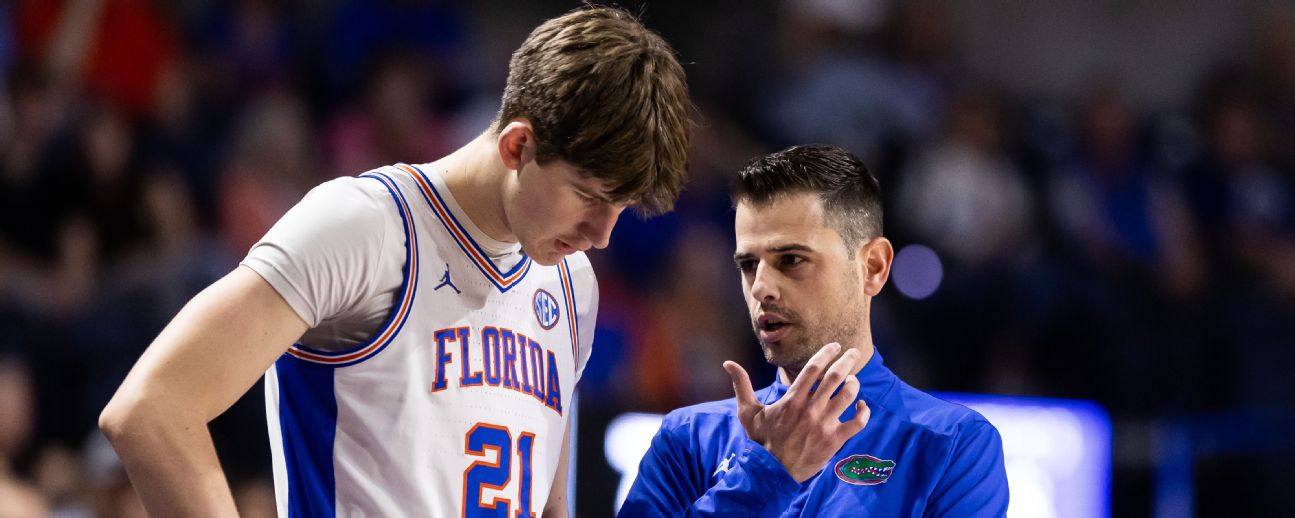





 Previous ranking: 4
Previous ranking: 4


 Previous ranking: 7
Previous ranking: 7



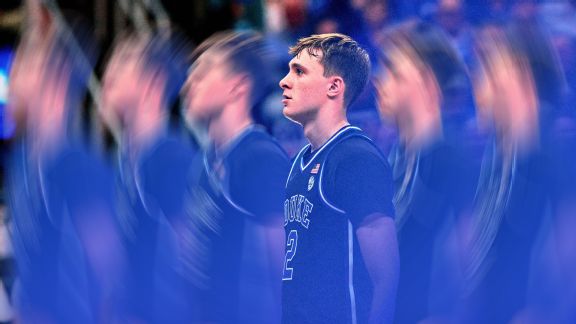 • We offer potential trades for Mavs, Flagg
• We offer potential trades for Mavs, Flagg















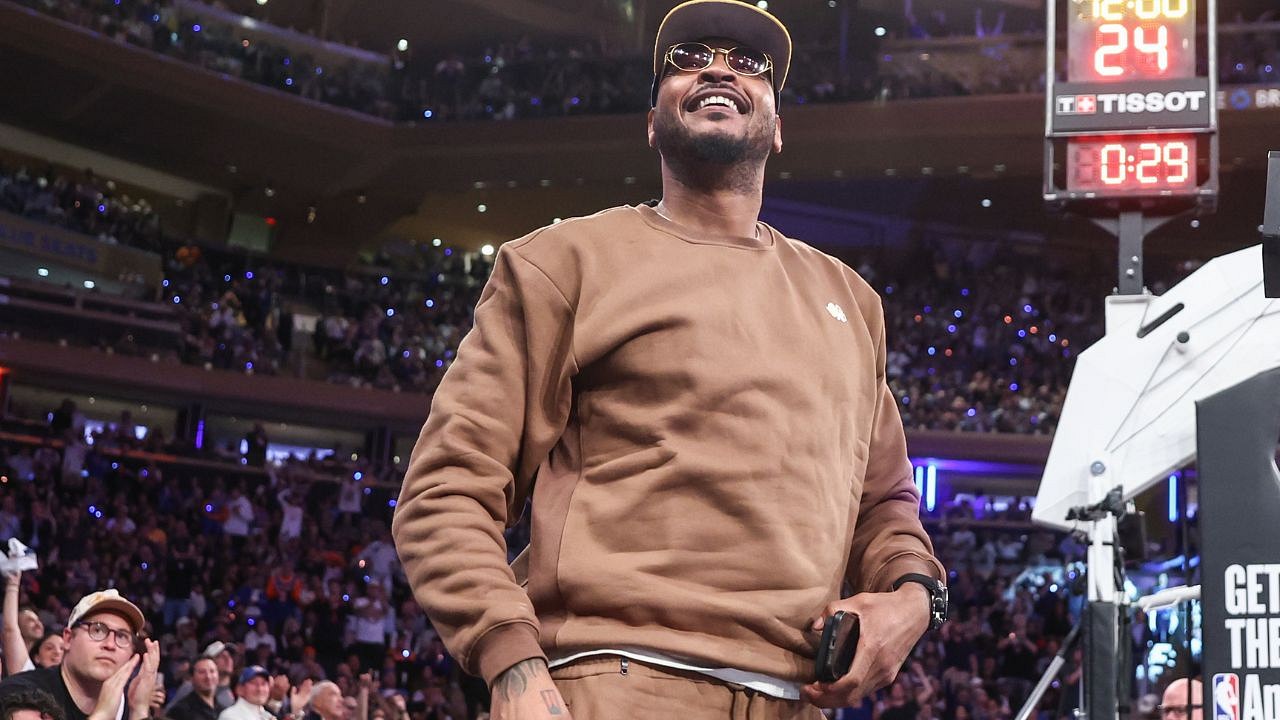
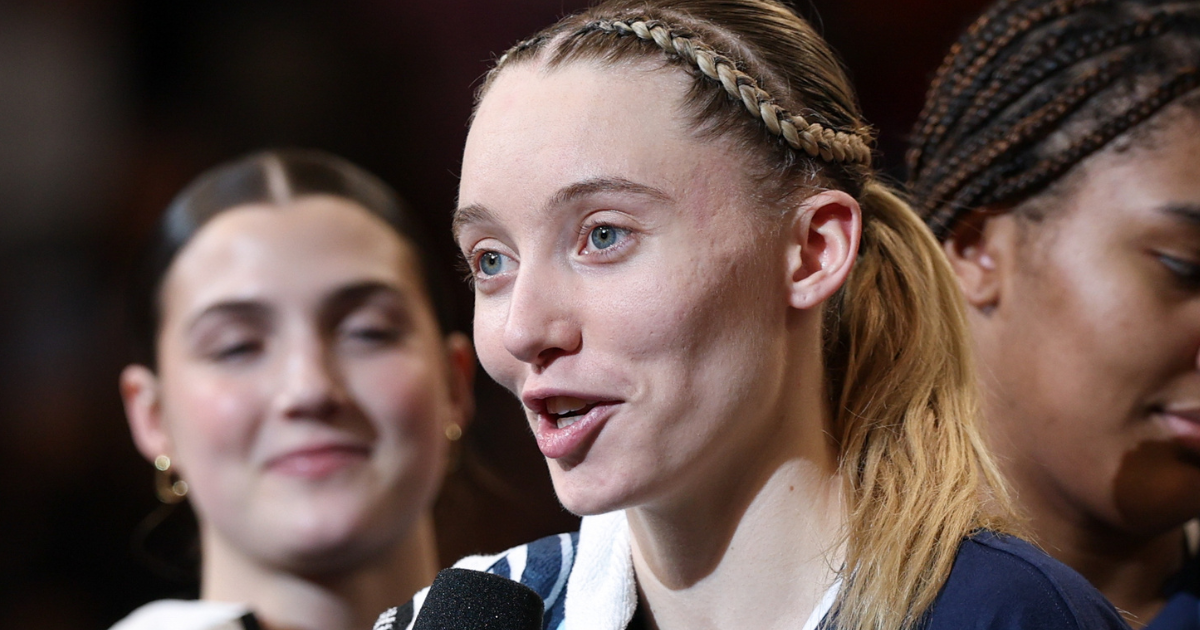
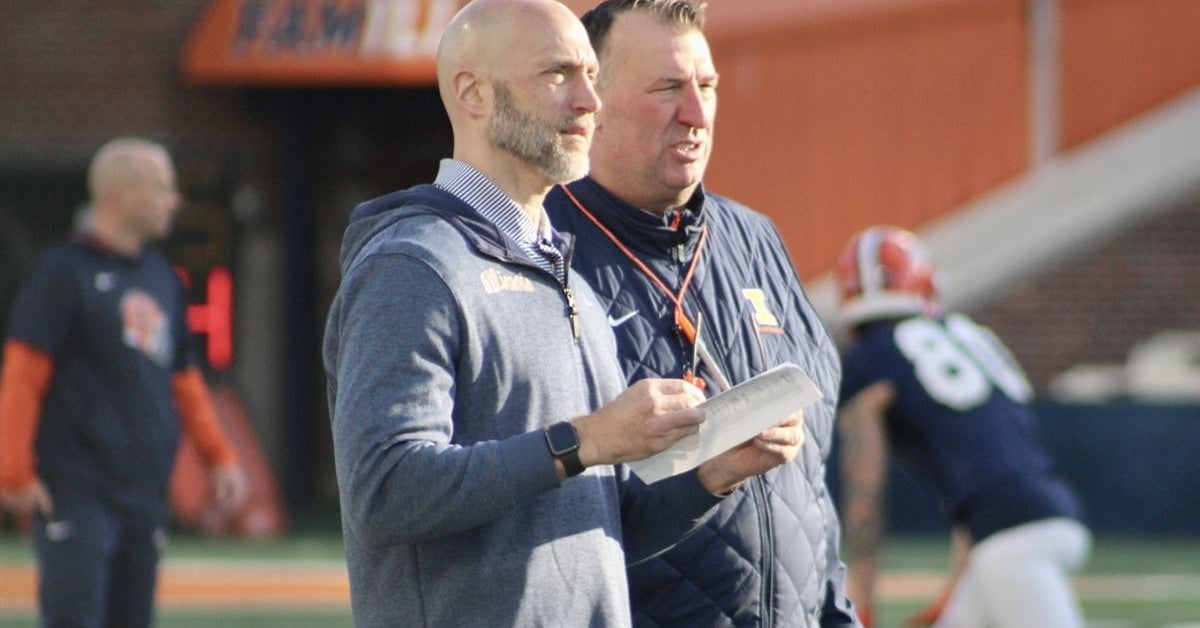
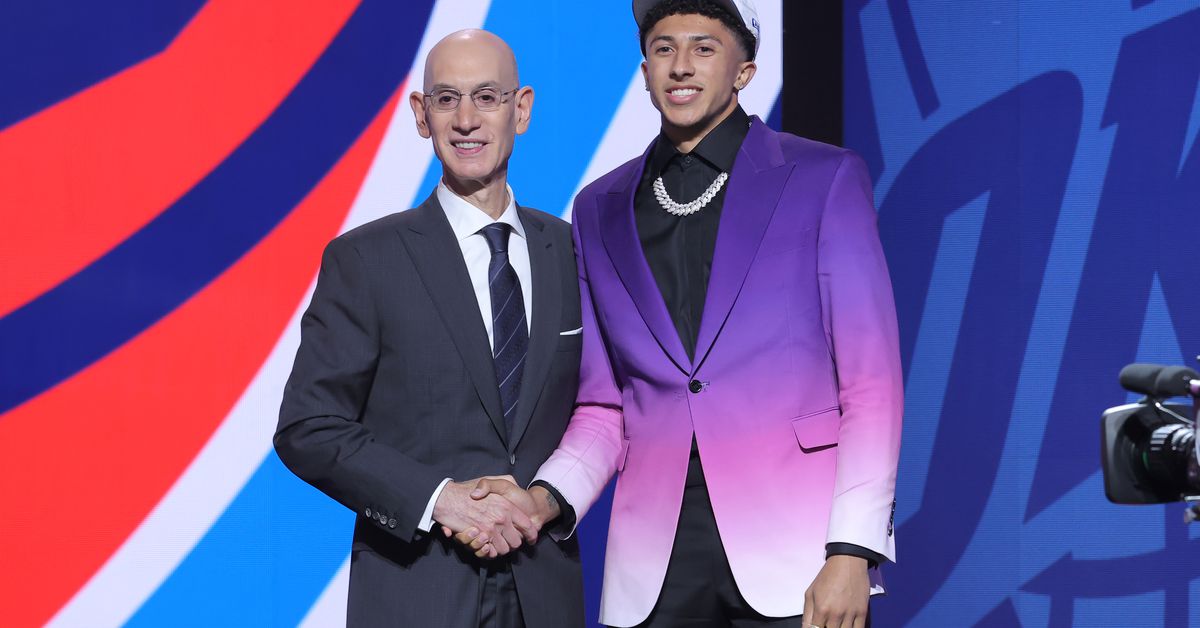







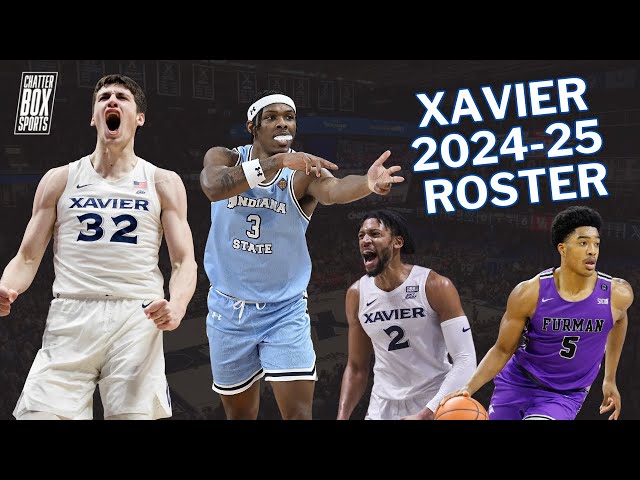

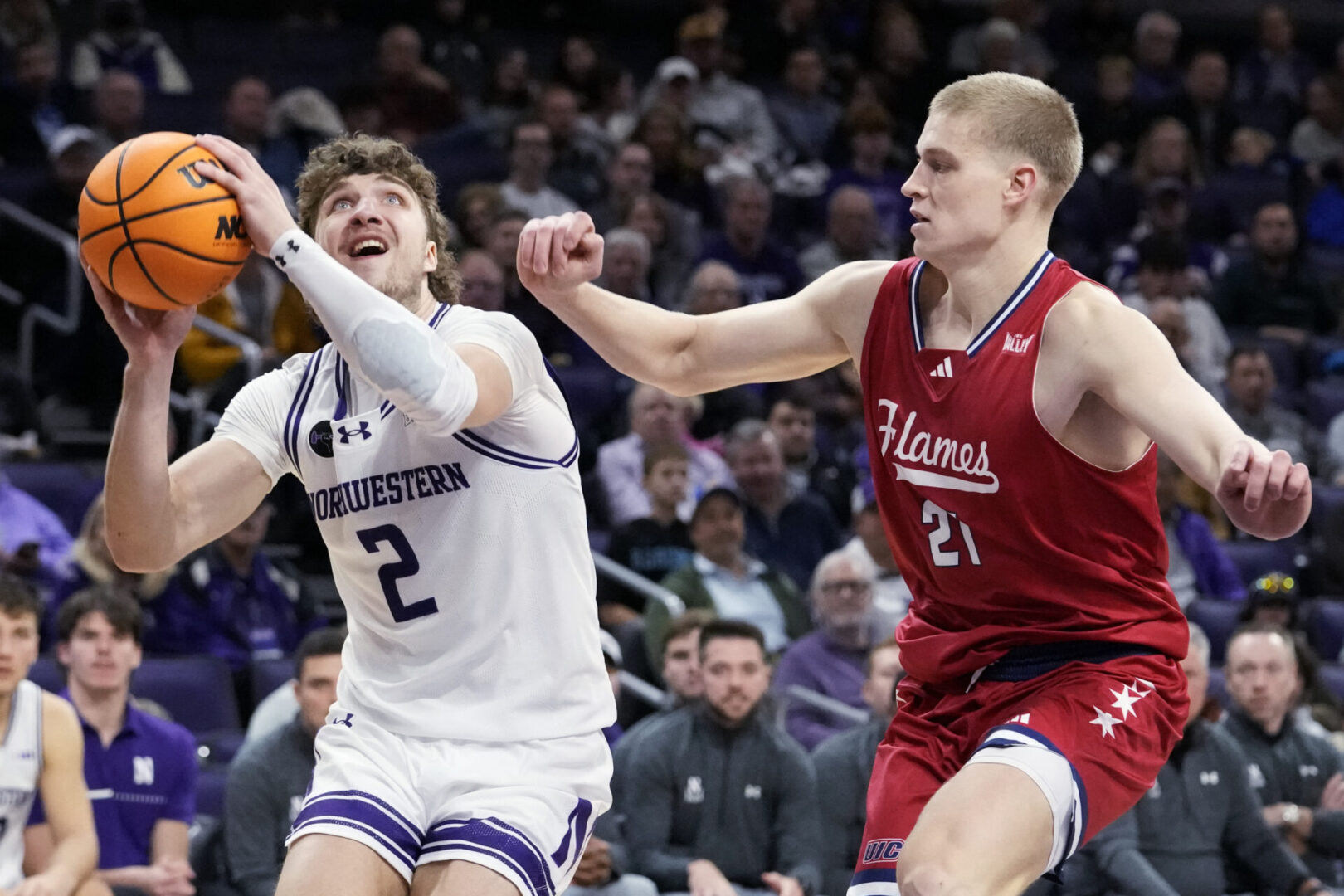









 ‘LeBron OPENS HIMSELF UP FOR SCRUTINY! MJ DIDN’T!’
‘LeBron OPENS HIMSELF UP FOR SCRUTINY! MJ DIDN’T!’  | Get Up
| Get Up







































